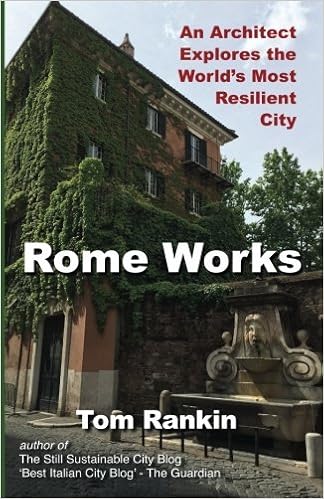Mercato

Last week I went to a marketplace for a press conference.
The building, the Mercato Metronio in Rome’s San Giovanni neighborhood, a masterpiece by mid century engineer Riccardo Morandi, has seen better days but the discussion was promising. As in, promises were made: Mayor Raggi and Commissioner Adriano Meloni promised to upgrade 15 different markets around the city, not just as venues for sale of food but also as social spaces. The documentation of the existing situation has been complete and now the transformations are ready to begin. The cost is estimated at €4 million.
The challenge is to attract people (who are by now accustomed to supermarkets or Eataly) to local markets. I see this happening through a number of simple steps.
The first involve the greater urban context:
- reduce the convenience of using a car in the city, eliminate “free parking” so that the option of hopping in a car for a trip to the supermarket remains a rural, not an urban, phenomena.
- simultaneously — and in keeping with the first solution—make the walk to the market more pleasurable: removing obstacles (usually cars) from sidewalks and crosswalks
- provide cycle parking at markets and incentives for innovative startups like Zolle which will use cargo bikes to deliver produce to buyers’ homes.
- If transit is present at marketplaces, ensure that it functions efficiently, on schedule; when buses are infrequent and crowded people don’t consider them an option to carry groceries.
The marketplace itself should obviously be clean, light, airy and beautiful, like the new Testaccio market for example. Stalls should be open all day, if possible, and it should attract business through social activities such as bars, restaurants, workshops, laboratories, playgrounds, libraries, cinemas. There is no reason a market should be JUST a market and then empty the rest of the day and Sunday
- Does it have free public seating?
- Does it have free public wifi?
- Does it have drinking fountains?
- Does art play a role? Is design memorable and good?
- Can deliveries be made without blocking public access?
- Can sections be closed off while others remain open?
- There’s a growing business of food tours and workshops. Markets should have industrial kitchens for food demonstrations and cooking lessons (like Eataly does!)
When I think of great markets (like Santa Caterina or Boqueria in Barcelona) I think of great public spaces which have little in common with supermarkets. Rome’s markets can return to being good places to shop and with a little effort become great places to do more than shop.
















Mr Rankin – I think the comments above are spot on. I am interested in speaking with you about your work and your background. I have fallen in love with Rome and see a tremendous amount of potential for it to transform into a true economic, social and environmentally sustainable hub. I’m looking to apply my recently obtained MSc in Environmental Policy and Regulation from the London School of Economics within the city and thought you would be an ideal person to reach out to. I would really appreciate speaking with you if you have a moment!
LikeLike